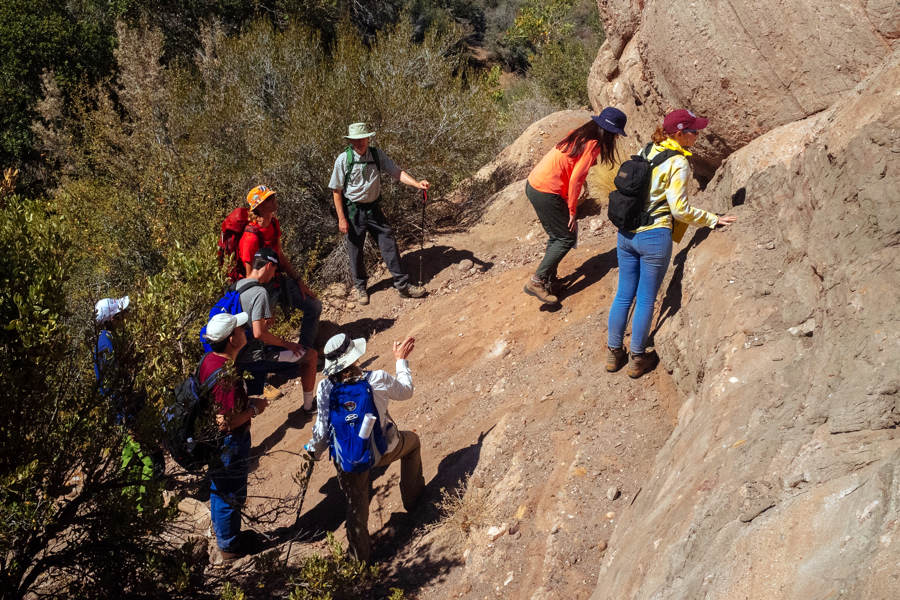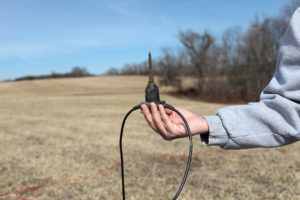All Categories
Featured
Table of Contents
Geophysical Exploration in Roleystone WA 2022

Other possible geophysicist majors that aren't geophysics or geoscience consist of: Atmospheric sciences and meteorology Chemical and physical oceanography Earth science Environmental science Hydrology and water resources science Materials science By earning any geophysicist degree, and by taking the needed geology courses, you ought to get approved for an entry-level position as a geoscientist or geophysicist.
Ultimately, students should find out: a branch of geology that takes a look at the various aspects of minerals, including chemical composition, internal crystal structure, and physical properties. the study of rocks and the processes and conditions that form and transform them gradually. There are a few subdivisions in this branch of geology, consisting of igneous, metamorphic, and sedimentary rocks.

This field examines structural rock features such as cleavage, faults, joints, and little folds. They need to also find out the computer system skills essential to: analyze information create digital designs and maps operate geoscientists' software Trainees should likewise make the most of all opportunities to get real-world experience. Aspiring geophysicists ought to expect to hang out learning: in the classroom in the field in laboratories Undoubtedly, abilities taught in the class are very important for aspiring geophysicists.
Geophysics Definition & Meaning in North Perth WA 2023
Geoscientists invest a lot of their time outside when working in the field, so they must have "outdoor skills" like outdoor camping and operating boats, aircraft, and other automobiles. Since they spend a lot time in remote places, it's important that geophysicists also have the physical endurance to carry required devices on their walkings to places of research study.
The job provides: a high typical and leading earnings a high rate of individual satisfaction amongst geophysicists low work tension positive task outlook More details on profits potential and job outlook is detailed below. For students aiming to land an entry-level function as a geoscientist or geophysicist, it takes four years, or the time required to finish a bachelor's degree in geophysics or a related discipline.
Some research study positions in geophysics require postgraduate degrees. If you prepare to teach at a college or university, you need to make a Ph. D. in geophysics or an associated field. The time it takes to earn a Ph. D. varies by organization and program, however it usually takes four to 6 years beyond the bachelor's degree.
Geophysics in Shoalwater Western Australia 2023
A lot of companies require prospects to have a bachelor's degree in geophysics or a carefully related discipline for all entry-level positions. As a result, there's no way around the degree requirements for becoming a geophysicist.
Presently, 31 states need licensing for geologists, although licensing is not always needed, particularly for entry-level work. The states that do problem licenses use the Principles of Geology Exam (FGE), which is administered through the National Association of State Boards of Geology (ASBOG). Now that you understand which degree for geophysicist jobs you need, you'll need to land a task, and it's important to discover how much money you can make in this profession.
According to BLS, the average annual wage for geoscientists is $93,580. According to BLS, certain industries offer greater incomes for geoscientists, and in some cases, they offer higher-than-average profits.
Geoscientists : Occupational Outlook Handbook in Ocean Reef Western Australia 2021
In fact, mining, quarrying, and oil and gas extraction uses over $32,000 more each year than the average annual wage for this occupation. The federal government, too, uses over $10,000 more in incomes than the nationwide average for geoscientists. In addition to industry type, geographic place can greatly impact revenues for this profession.

The top-paying states and their yearly mean earnings, according to the BLS, consist of: Texas $166,720 Oklahoma $149,630 Pennsylvania $120,590 Hawaii $120,130 Colorado $107,260 These 5 top-paying states offer much greater salaries than the average for this profession. Salaries for geoscientists in Texas are over $73,000 higher than the national average.
It needs to come as not a surprise that the majority of these high-paying locations remain in Texas and Oklahoma, however some are found in California, Louisiana, and Colorado. The top 10 highest-paying metro locations for geoscientists are: Houston-The Woodlands-Sugar Land, Texas: $188,400 Tulsa, Oklahoma: $186,490 Midland, Texas: $167,040 Odessa, Texas: $147,080 Oklahoma City, Oklahoma: $145,350 Bakersfield, California: $130,080 Urban Honolulu, Hawaii: $124,470 New Orleans-Metairie, Louisiana: $121,030 Washington-Arlington-Alexandria, DC, VA, MD, WV: $120,180 Denver-Aurora-Lakewood, Colorado: $116,910 For some geoscientists and geophysicists, residing in a metro city is not as appealing as living in a smaller sized neighborhood.
Table of Contents
Latest Posts
Greeley-evans Area 3d Geophysical Survey in Bicton Australia 2022
Airborne Geophysical Methods in Bateman Western Australia 2022
Integrated Geophysical Surveys For The Safety in Beeliar Australia 2021
More
Latest Posts
Greeley-evans Area 3d Geophysical Survey in Bicton Australia 2022
Airborne Geophysical Methods in Bateman Western Australia 2022
Integrated Geophysical Surveys For The Safety in Beeliar Australia 2021